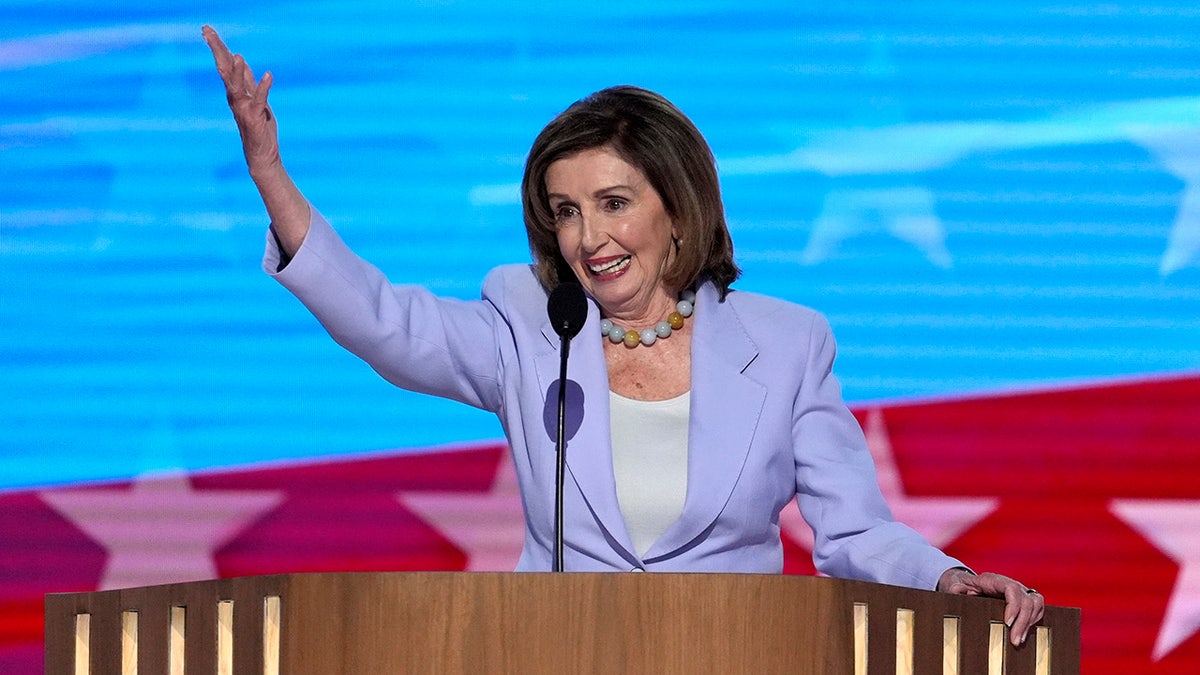The battle for control of the House of Representatives is extremely fierce. Classic political jump ball. It's hard to tell which way the House will lean.
Republicans are likely to win the Senate. But nearly all of the competitive Senate contests are close. Pennsylvania. Oh. Michigan. Wisconsin. Texas suddenly appears. Some observers never rule out Florida's possibility. Montana appears to be moving away from the Democratic Party. Democrats seem to be doing well in Arizona. But what if former President Trump wins Arizona? Even if all these races were decided by just 1-2 percentage points, Republicans could win a solid 53-54 seats and control the Senate majority.
But if President Biden had not withdrawn his re-election bid in mid-July, we might have been told a very different scenario for control of the House and Senate.
Reporter's Note: The hard part is yet to come.
On July 21, the president said he was resigning citing “the best interests of the party and the country.”
Democrats in the House and Senate breathed a collective sigh of relief.
Many feared — and still do — that Mr. Biden had lost more than a step, although they would not admit it publicly. he looked tired. During a debate with former President Trump in late June, there were moments when he was completely incoherent. Few people were excited. They worried that a second Biden nomination would erode all enthusiasm on the Democratic side. Former President Trump will likely bash Biden in the race for the White House. But what really surprised them was the impact President Biden will have on the race for re-election.
President Joe Biden is photographed in front of the U.S. Capitol. (Getty Images)
Competing for Senate seats in Pennsylvania and Ohio? It's probably down the drain.
Former House Speaker Kevin McCarthy (R-Calif.) predicted that Republicans would pick up dozens of seats in 2022. Mr. McCarthy's prediction may have been off by two years. Had Mr. Biden come out on top, there would likely have been some bloodshed in the House elections.
Now, the House of Representatives is a ball game for everyone.
On a sweltering morning in mid-July, Biden campaign officials met with House Democrats at the Democratic National Committee. Some House Democrats, like Rep. Jim Clyburn (D.C.), declared they were “on board with Biden” as he entered the forum. But the ground was already changing.
Who's in charge: The muddy history of the 50-50 Senate
The president stubbornly remained in the race. But former House Speaker Nancy Pelosi, D-Calif., keeps the caucus she once led top of mind. Pelosi understood the political disaster that likely awaited Democrats if the president did not step down. The San Francisco Democratic Party was unable to publicly call on Biden to resign. Ms. Pelosi may be more artistic than that. She quietly urged concerned Democrats to speak up. Without saying anything directly, a swell of Congressional Democrats began calling for the president's resignation.
On a sweltering afternoon in mid-July, a group of Biden advisers huddled with dying Senate Democrats at the Democratic Senatorial Campaign Committee (DSCC). Almost all Senate Democrats in attendance tried to avoid reporters. In fact, many had drivers take them several hundred yards from the Senate Building of the Capitol to the DSCC across the street. All to deceive the reporters. Their silence spoke volumes about President Biden remaining in the race.
Senate Majority Leader Chuck Schumer (DN.Y.) also visited Delaware with President Biden just hours before the assassination attempt on former President Trump in Pennsylvania. News of Mr. Schumer's audience with the president disappeared into the milieu of disaster coverage in Butler, Pennsylvania. But Schumer feared the Republican Party would explode if Biden persisted.

Senate Majority Leader Chuck Schumer (D-N.Y.) speaks with House Minority Leader Hakeem Jeffries (D-N.Y.) at the Democratic Senate Campaign Committee at the Capitol in Washington, D.C., on July 23, 2024. ) at a press conference. (Kent Nishimura/Getty Images)
The former House speaker's deft touch was typical Pelosi. Read the climate. No fingerprints. Wink and nod. Give the green light for someone else to do something. A person close to Ms. Pelosi once described the former House speaker's sensitivity to me, saying, “You wouldn't even notice that you were being slashed because there was blood flowing.''
When Pelosi was speaker, allies and foes alike constantly wondered how she garnered votes. Helping President Biden orchestrate his exit from the presidential sweepstakes was no different. Just switch the impossible to the inevitable.
A longtime friend of Ms. Pelosi confided to me years ago that Ms. Pelosi knew how to carefully nudge House Democrats to shift voters in her district. That would give voters a cover to support certain issues and avoid facing opposition by voting against them. The base now supports this issue. But it wasn't without Pelosi's cunning engineering.
Afghanistan indicted for election day terror plot, questions and concerns from lawmakers: 'This is real'
This cunning tactic also worked in convincing Mr. Biden to withdraw. After weeks of massaging the issue behind the scenes, the president realized he had no choice but to resign. Otherwise, he will probably lose. Congressional Democrats will be resigned to their fate.
Vice President Harris may win. But Democrats have never had a primary season to decide on a candidate. of course. A traditional primary process would probably have favored Harris initially. That's simply because she has run for president before and served as vice president for nearly four years. But the quick pivot to Harris was based on efficiency considerations. After President Biden leaves office, Democrats will automatically nominate a credible, qualified candidate whose resume resonates with the party. So switching to Harris midway through was as seamless a transition as possible.

California Democratic Representative Nancy Pelosi speaks at the Democratic National Convention in Chicago, Wednesday, August 21, 2024. (AP Photo/J. Scott Applewhite)
But just as importantly, handing over the keys to Harris immediately injected much-needed energy into Congressional Democrats and their base. This change has emboldened Democrats in a way that was not possible under President Biden. Suddenly, Congressional Democrats are back in the game.
Republicans are likely to win the Senate on Tuesday night. But if Biden had remained at the top of the race, Democrats would have faced a big wave. Sen. Jon Tester (D-Mont.) appears to be in crisis. It is a close race involving Sen. Tammy Baldwin (D-Wis.), Sen. Sherrod Brown (D-Ohio), and Sen. Bob Casey (D-Penn.). Rep. Elissa Slotkin (D-Mich.) is in a dogfight with former Rep. Mike Rogers (R-Mich.) in Michigan for the seat held by retiring Sen. Debbie Stabenow (D-Mich.) is unfolding. Rep. Colin Allred (D-Texas) also has a chance in his Senate race against Sen. Ted Cruz (R-Texas). It is believed that Democrats could have lost most or all of these races had President Biden remained on the ballot. But thanks to the president's decisions, Democrats are now competitive in all of these and could score some victories even if they lose the Senate majority.
CLICK HERE TO GET THE FOX NEWS APP
The same goes for the Diet. It's a nip and tuck. yes. Republicans could maintain a slim majority or, in a best-case scenario, pick up seats. But Democrats are well-positioned and potentially well-positioned in every battleground district. If the president had stayed there, none of that would have happened.
So this is the basic lesson of President Biden's shocking decision to resign in July. That could have increased Democrats' chances of holding the White House. But the real dividends of the president's decision may be realized on Capitol Hill. It's not about winning the Senate and winning the House. But by avoiding ugly explosions.


